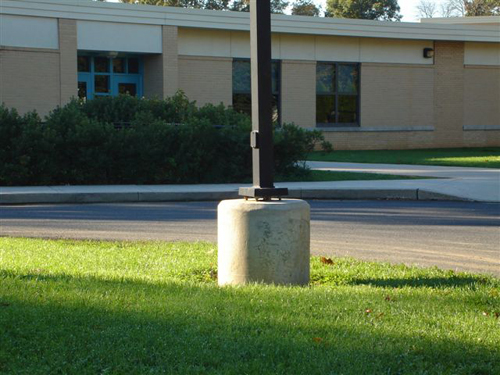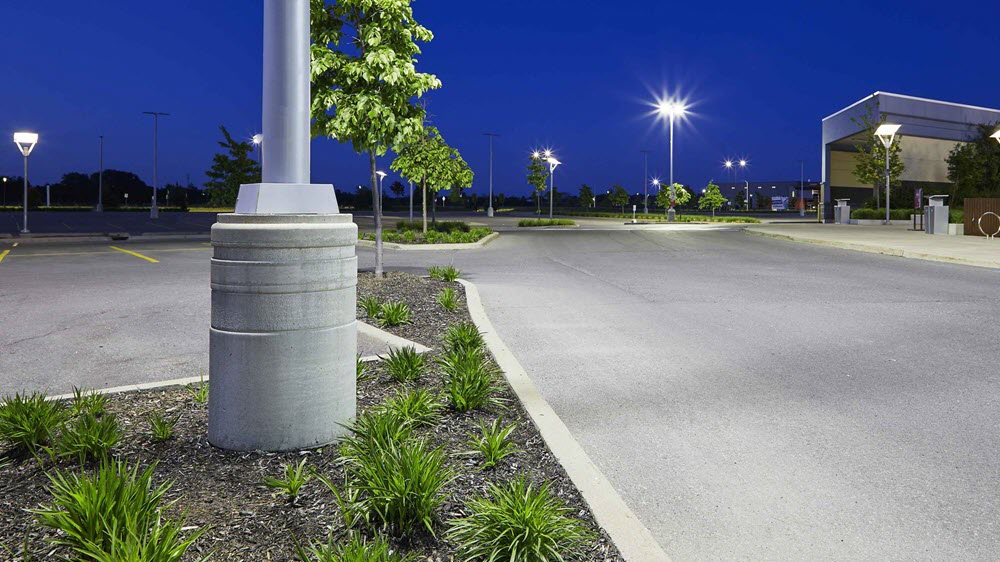Flood Light Base Servicesin Auburn Hills MI
Comprehensive Flood Light Installation for Enhanced Safety
We Are Locally Owned & Operated For Over 37 Years
Contact Us Today!
We Serve Businesses In And Around The Following Cities:
About Flood Light Base Services
Introduction: Illuminate the Importance of Flood Light Bases
The city of Auburn Hills is a beacon of economic growth and urban development. Its crucial geographical location right at the heart of Michigan’s Oakland County has not only seen an upswing in commercial growth, but also an ever-growing need for robust infrastructure and city planning. A critical, oft-overlooked part of this urban development puzzle is efficient lighting. Specifically, flood light bases matter because they are the sturdy, reliable anchors that keep these lights in place, providing illumination when and where it’s needed the most.
Understanding the Science of Flood Light Bases
At their core, flood light bases are fundamentally support structures paired with careful engineering and design. These bases serve as the foundation for your flood lights, ensuring stability, safety, and reliable illumination for your commercial property. Understanding this underlying design and its importance can make a considerable difference in your strategic decisions.
The right flood light base can optimize your lighting setup for maximum coverage and minimal energy consumption. More than just holding lights in place, these bases work with the environment to resist wind loads and the wear and tear of the elements, extending the longevity of your fixtures in the process.
The Dynamic Benefits of Flood Light Bases for Commercial Properties
As we delve further into the intricacies of commercial properties in Auburn Hills, it’s essential to understand that the benefits of flood light bases extend beyond their basic purpose of holding lights. They can increase the safety, function, and aesthetics of your property.
Safety is a paramount concern for business owners. Adequate, well-placed flood lights on strong bases deter criminal activity, have a calming effect on customers and employees, and increase overall safety by reducing risks of trips and falls. A company known for its proficient work in Auburn Hills, D&J Contracting, has been instrumental in helping local businesses achieve these safety benefits.
Flood light bases also indirectly contribute to the energy efficiency of a lighting setup. By providing stability, they minimize the need for frequent replacements and maintenance, reducing time, expenses, and, by extension, energy use.
Real-World Applications: Making Auburn Hills Shine Bright
The benefits of flood light bases are not mere conjectures, but realities witnessed in Auburn Hills’ commercial scenario. From major industrial facilities and shopping complexes to small businesses, many organizations are reaping these benefits.
Take, for example, a major shopping precinct in Auburn Hills. With efficient flood lighting anchored on strong bases, the area stays brightly illuminated, creating a sense of security and comfort for shoppers even after dark. D&J Contracting’s work in installing durable flood light bases has contributed significantly to this successful implementation.
Another application can be seen in the various industrial estates sprinkled across Auburn Hills. These properties maintain a high standard of safety and functionality with the support of reliable flood lighting. The hidden hero behind this? You guessed it—well-engineered flood light bases.
Choosing the Right Partner: The Role of D&J Contracting
Identification and structuring of a lighting plan isn’t an endeavor to undertake without professional help. In Auburn Hills, many businesses have relied on specialists like D&J Contracting to assist with the design, implementation, and maintenance of flood light bases. With their expertise and commitment to quality, you can be assured that your commercial property’s lighting setup is in competent hands.
The Power of Illumination
In conclusion, as Auburn Hills continues to grow as a commercial hub, there’s no denying the crucial role that flood light bases play in the city’s development. By contributing to safety, efficiency, and aesthetics, these bases provide a foundation that supports the city’s nighttime economy. So whether you’re a small business looking to improve your storefront illumination or an industrial complex aiming to heighten safety measures, consider giving deserved attention to your flood light bases. Consider partnering with a seasoned service provider like D&J Contracting. Let’s continue making Auburn Hills shine with the power of proper illumination, anchored in robust flood light bases.
Flood Light Base Services Gallery


Call Us Today to receive your Free Quote for
Flood Light Bases in Auburn Hills
Serving: Auburn Hills, Michigan

About Auburn Hills, Michigan
In 1908, automobile pioneer John Dodge bought a farmhouse 3 miles (4.8 km) northeast of Auburn Heights to use as his country retreat. His oldest child, Winifred Dodge, married real estate baron Wesson Seyburn, who built his own country retreat 2.5 miles (4.0 km) north of Auburn Heights. The estate included hunting land, dog kennels, a swimming pool, horse stables, and a 5,000-square-foot (460 m) Colonial Revival house. Pontiac Township purchased the estate in 1976, and adapted the buildings for government use. Today, it is known as the Auburn Hills Civic Center.
The first use of the name “Auburn Hills,” in 1964, was by Oakland Community College. They named their campus (a former Nike missile base) at Featherstone and Squirrel roads for the town and the hilly terrain in the area. Besides Oakland Community College, three other colleges, Oakland University, Baker College, and Western Michigan University Thomas M. Cooley Law School have campuses partially within the city limits.
Auburn Hills began as Pontiac Township, including the village of Auburn, in 1821, at what is today the corner of Auburn and Squirrel roads. Situated on the Clinton River, it was named by Aaron Webster, the first settler, for Auburn, New York. His sawmill and grist mill attracted settlers to Auburn. After the streets were laid out in 1826, Auburn rivaled nearby Pontiac until the 1860s, when it lost its own prosperity. The town was renamed Amy in 1880, and it officially became Auburn Heights in 1919. Pontiac Township bordered the city of Pontiac on two sides. The township attempted to incorporate as Pontiac Heights in 1971, but was denied by state officials. Pontiac Township became a charter township in 1978, to protect itself from further annexation. In 1983, Pontiac Township merged with the village of Auburn Heights to become the City of Auburn Hills. It is not to be confused with the similarly named city of Auburn, Michigan, that exists in Bay County, near Saginaw Bay.
According to the United States Census Bureau, the city has a total area of 16.64 square miles (43.10 km), of which 16.60 square miles (42.99 km) is land and 0.04 square miles (0.10 km) (0.24%) is water.
| Census | Pop. | Note | %± |
|---|---|---|---|
| 1880 | 111 | — | |
| 1990 | 17,076 | — | |
| 2000 | 19,837 | 16.2% | |
| 2010 | 21,412 | 7.9% | |
| 2020 | 24,360 | 13.8% | |
| U.S. Decennial Census | |||
As of the census of 2010, there were 21,412 people, 8,844 households, and 4,923 families living in the city. The population density was 1,289.9 inhabitants per square mile (498.0/km). There were 9,965 housing units at an average density of 600.3 per square mile (231.8/km). The racial makeup of the city was 66.3% White, 18.5% African American, 0.3% Native American, 8.9% Asian, 2.7% from other races, and 3.4% from two or more races. Hispanic or Latino of any race were 7.8% of the population.
There were 8,844 households, of which 27.0% had children under the age of 18 living with them, 38.8% were married couples living together, 12.4% had a female householder with no husband present, 4.5% had a male householder with no wife present, and 44.3% were non-families. 33.5% of all households were made up of individuals, and 7.3% had someone living alone who was 65 years of age or older. The average household size was 2.24 and the average family size was 2.90.
The median age in the city was 31.4 years. 19.4% of residents were under the age of 18; 17.8% were between the ages of 18 and 24; 31.9% were from 25 to 44; 21.6% were from 45 to 64; and 9.4% were 65 years of age or older. The gender makeup of the city was 48.4% female and 51.6% male.
As of the census of 2000, there were 19,837 people, 8,064 households, and 4,604 families living in the city. The population density was 1,194.5 inhabitants per square mile (461.2/km). There were 8,822 housing units at an average density of 531.2 per square mile (205.1/km). The racial makeup of the city was 75.92% White, 13.22% African American, 0.32% Native American, 6.33% Asian, 0.04% Pacific Islander, 1.56% from other races, and 2.61% from two or more races. Hispanic or Latino of any race were 4.50% of the population.
There were 8,064 households, out of which 26.7% had children under the age of 18 living with them; 43.0% were married couples living together; 10.5% had a female householder with no husband present and 42.9% were non-families. 33.1% of all households were made up of individuals, and 6.0% had someone living alone who was 65 years of age or older. The average household size was 2.25 and the average family size was 2.92.
The age distribution is 20.4% under the age of 18, 15.9% from 18 to 24, 38.1% from 25 to 44, 18.2% from 45 to 64, and 7.3% who were 65 years of age or older. The median age was 31 years. For every 100 females, there were 98.3 males. For every 100 females age 18 and over, there were 97.5 males.
The median income for a household in the city was $51,376, and the median income for a family was $60,849. Males had a median income of $45,686 versus $34,015 for females. The per capita income for the city was $25,529. About 3.9% of families and 6.3% of the population were below the poverty line, including 6.4% of those under age 18 and 4.4% of those age 66 or over.
School districts serving sections of Auburn Hills include Avondale School District, Pontiac School District, and Rochester Community Schools.
The Avondale School District operates two elementary schools in the city limits: R. Grant Graham Elementary School and Auburn Elementary School. Portions of Auburn Hills in ASD are zoned to these schools. All ASD residents are zoned to Avondale Middle School in Rochester Hills and Avondale High School in Auburn Hills. Other ASD facilities in Auburn Hills include the district administrative offices and Avondale Montessori. A Pontiac school district school, Will Rogers Elementary School, is located in northeastern Auburn Hills.
Private schools in Auburn Hills include:
- Auburn Hills Christian School
- Oakland Christian School
Private schools near Auburn Hills:
- Notre Dame Preparatory/Marist Academy, Pontiac
- Holy Family Regional School (HFRS) – Consists of a grade PK-3 North Campus in Rochester and a 4-8 South Campus in Rochester Hills. Two churches in Auburn Hills designate HFRS as the parish school: St. John Fisher Chapel and Sacred Heart of the Hills. The first two sponsored the school from the beginning and the other three joined later, with Sacred Heart being the final one.
The main campus of Oakland University sits within Auburn Hills. Oakland Community College, Baker College, and Western Michigan University Thomas M. Cooley Law School are also situated in Auburn Hills.
Call Us Today to receive your Free Quote for
Flood Light Bases in Auburn Hills
Related Services in Auburn Hills, Michigan
We Serve Businesses In The Following Zip Codes:
48007, 48015, 48021, 48026, 48035, 48036, 48038, 48042, 48043, 48044, 48045, 48046, 48047, 48048, 48050, 48051, 48066, 48071, 48080, 48081, 48082, 48083, 48084, 48085, 48088, 48089, 48090, 48091, 48092, 48093, 48098, 48099, 48225, 48230, 48236, 48310, 48311, 48312, 48313, 48314, 48315, 48316, 48317, 48318, 48397